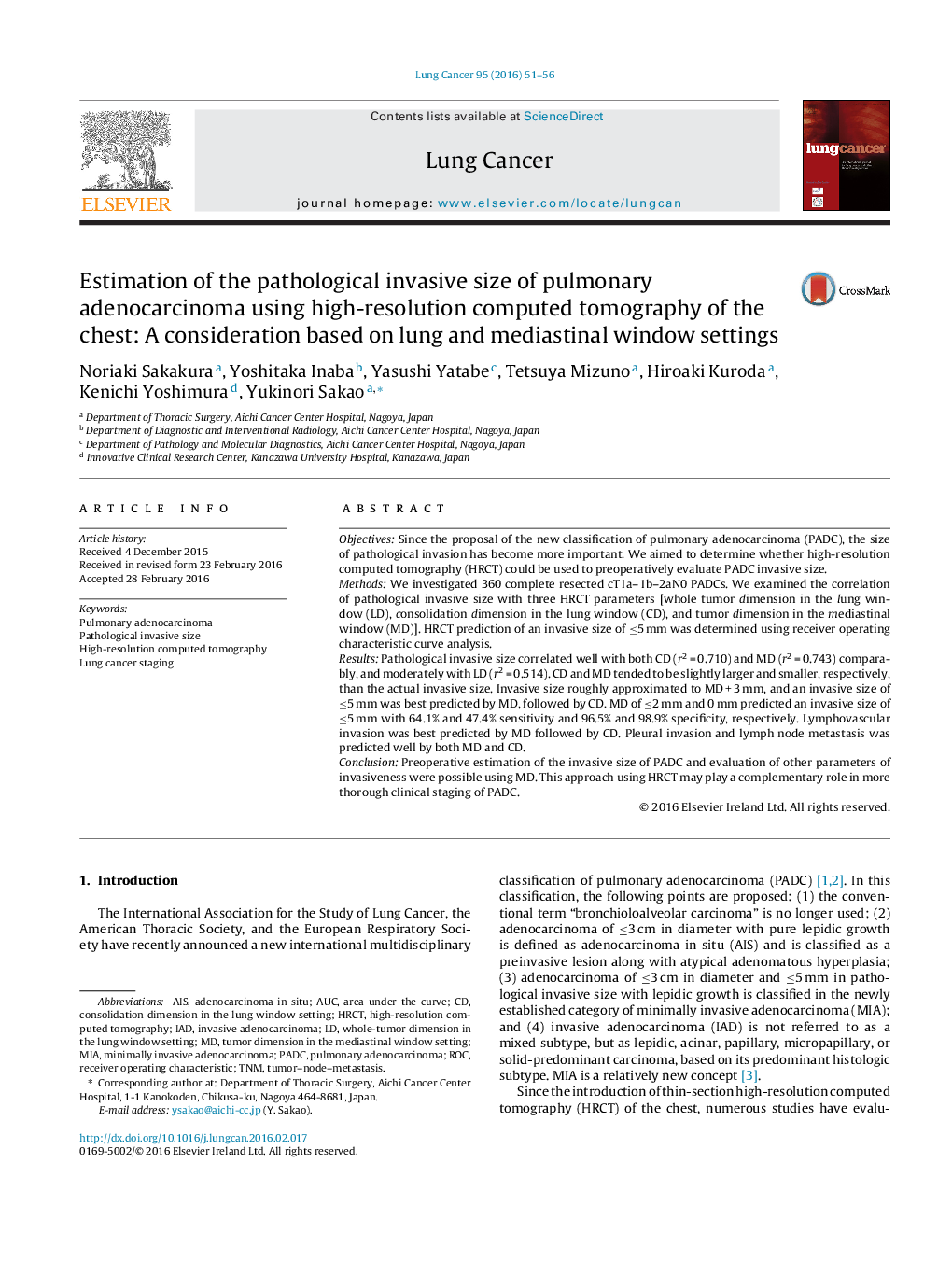| کد مقاله | کد نشریه | سال انتشار | مقاله انگلیسی | نسخه تمام متن |
|---|---|---|---|---|
| 2140420 | 1547972 | 2016 | 6 صفحه PDF | دانلود رایگان |
• Radiological estimation of pulmonary adenocarcinoma invasive size was possible.
• Consolidation dimension and mediastinal window dimension were considered.
• Pathological invasive size correlated best with tumor dimension in the mediastinal window.
• Invasive size of ≤5 mm was predicted using tumor dimension in the mediastinal window.
• This approach may play a complementary role in more thorough lung cancer staging.
ObjectivesSince the proposal of the new classification of pulmonary adenocarcinoma (PADC), the size of pathological invasion has become more important. We aimed to determine whether high-resolution computed tomography (HRCT) could be used to preoperatively evaluate PADC invasive size.MethodsWe investigated 360 complete resected cT1a–1b–2aN0 PADCs. We examined the correlation of pathological invasive size with three HRCT parameters [whole tumor dimension in the lung window (LD), consolidation dimension in the lung window (CD), and tumor dimension in the mediastinal window (MD)]. HRCT prediction of an invasive size of ≤5 mm was determined using receiver operating characteristic curve analysis.ResultsPathological invasive size correlated well with both CD (r2 = 0.710) and MD (r2 = 0.743) comparably, and moderately with LD (r2 = 0.514). CD and MD tended to be slightly larger and smaller, respectively, than the actual invasive size. Invasive size roughly approximated to MD + 3 mm, and an invasive size of ≤5 mm was best predicted by MD, followed by CD. MD of ≤2 mm and 0 mm predicted an invasive size of ≤5 mm with 64.1% and 47.4% sensitivity and 96.5% and 98.9% specificity, respectively. Lymphovascular invasion was best predicted by MD followed by CD. Pleural invasion and lymph node metastasis was predicted well by both MD and CD.ConclusionPreoperative estimation of the invasive size of PADC and evaluation of other parameters of invasiveness were possible using MD. This approach using HRCT may play a complementary role in more thorough clinical staging of PADC.
Journal: Lung Cancer - Volume 95, May 2016, Pages 51–56
